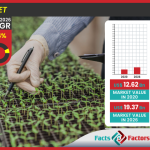Satellite Identifies Methane; Considered As A Tool To Save Climate
Recently, researchers stated that for the first time, a satellite on a regular global survey detected and measured methane gas emerging from a gas well blast, a tool that can be significant in efforts to reduce climate change. For long, the oil and gas disasters have emitted a huge amount of methane—a gas after carbon dioxide having the potential to warm the planet. The calculation of such releases has been a difficulty to researchers. But lately, a study published in the Proceedings of the National Academy of Sciences stated a satellite launched by the ESA (European Space Agency)—the TROPOMI (Tropospheric Monitoring Instrument)—identified and calculated emissions of methane from an explosion in the last year in Ohio.
The study revealed methane from the damaged well was released at around 120 tons per hour—which is almost twice the rate of a commonly reported gas leak in 2015 at Aliso Canyon in California. ExxonMobil Corp.’s XTO Energy eventually plugged the well in Ohio following it had been leaking for almost 3 Weeks. Earlier, satellites had to be cautiously targeted to detect leaks, like in the Aliso Canyon case. But TROPOMI identified the methane escape as a part of its habitual patrol, setting the platform for gains in leak discovery. Steven Hamburg, Co-Author of the study, stated the outcomes “showed the likelihood for satellites to aid in seeing and quantifying emissions regardless of where they are” and that methane-identifying satellites can help in discovering fixes.
Similarly, the ESA was in news for getting a $15.9 Billion funding boost concerning its space exploration plans. The ESA has received a $15.9 Billion (14.4 billion-euro) funding from its 22 member states since it seeks to lift off new missions and maintain its position in research and space exploration. The space agency—which concluded 2 Days ministerial meeting held in Seville, Spain—sanctioned a budget of 12.5 billion euros for the coming 3 Years or 14.4 billion euros for 5 Years.


